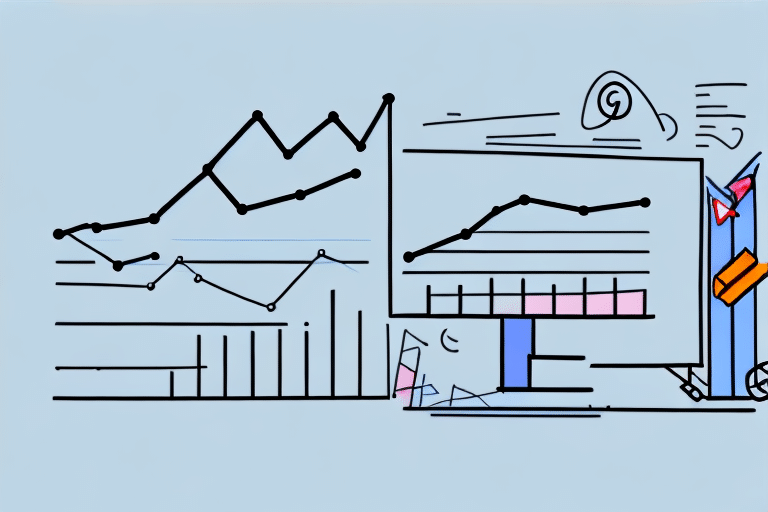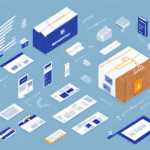Demand Forecasting 101: Everything Ecommerce Businesses Need to Know
As ecommerce businesses continue to grow, demand forecasting has become an essential process to stay competitive in the market. Properly estimating customer demand can prevent inventory stockouts, reduce waste, and optimize business performance. In this article, we explore everything ecommerce businesses need to know about demand forecasting, including its importance, fundamentals, and key factors affecting forecasting accuracy.
Why Demand Forecasting is Crucial for Ecommerce Success
Demand forecasting plays a pivotal role in the success of ecommerce businesses. Accurately predicting customer demand helps optimize inventory management, ensuring sufficient stock to meet customer needs while minimizing excess inventory and associated carrying costs. According to a Forbes article, businesses with precise demand forecasting can reduce inventory costs by up to 20%.
Optimizing Inventory Management
Effective demand forecasting allows businesses to maintain optimal inventory levels, preventing stockouts that can lead to lost sales and dissatisfied customers. Additionally, it helps in avoiding overstock situations that result in increased storage costs and potential product obsolescence.
Enhancing Customer Satisfaction and Loyalty
By aligning inventory with customer demand, businesses can ensure timely product availability, enhancing customer satisfaction and fostering loyalty. This alignment also supports better customer service and faster delivery times.
The Fundamentals of Demand Forecasting
Demand forecasting involves predicting future customer demand for products or services based on historical data and various analytical methods. Accurate forecasting is vital for effective decision-making in inventory management, marketing strategies, and financial planning.
Quantitative Forecasting Techniques
- Time Series Analysis: Examines historical data to identify patterns and trends over time, aiding in forecasting future demand.
- Regression Analysis: Analyzes the relationship between demand and other influencing factors to predict future sales.
- Machine Learning Algorithms: Utilizes advanced computational models to analyze vast datasets and enhance forecasting accuracy.
Qualitative Forecasting Techniques
- Expert Opinion: Gathers insights from industry experts to inform demand predictions.
- Market Research: Collects data from surveys and focus groups to understand customer preferences and potential demand.
- Delphi Method: Utilizes a structured communication technique among a panel of experts to reach a consensus forecast.
Key Factors Influencing Demand Forecasting Accuracy
Various factors can impact the accuracy of demand forecasts in the ecommerce sector. Understanding these factors is essential for developing reliable forecasting models.
Seasonal Variations
Demand for products often fluctuates with seasons and holidays. For instance, ecommerce businesses might experience increased demand for electronics during the holiday season or for fitness equipment at the start of the new year.
New Product Launches
Introducing new products poses forecasting challenges due to the lack of historical sales data. Businesses must rely on market research and expert opinions to estimate potential demand.
Promotional Activities
Sales promotions and marketing campaigns can significantly influence demand. While promotions can boost sales, they may also complicate demand forecasting by introducing temporary spikes.
Supply Chain Disruptions
Unexpected disruptions in the supply chain, such as shipping delays or manufacturing issues, can affect product availability and, consequently, demand forecasts.
Changes in Consumer Behavior
Shifts in consumer preferences, often influenced by economic conditions or cultural trends, can alter demand patterns. For example, the COVID-19 pandemic increased demand for home office equipment while reducing demand for travel-related products.
Data Collection and Analysis for Accurate Forecasting
Accurate demand forecasting relies on comprehensive data collection and robust analysis methods. Implementing effective data strategies is crucial for reliable predictions.
Strategies for Data Collection
- Sales History Tracking: Analyzing past sales data to identify trends and inform future predictions.
- Monitoring Online Traffic: Assessing website traffic to gauge product popularity and potential demand.
- Customer Feedback: Utilizing reviews and surveys to understand customer needs and preferences.
Data Analysis Techniques
Employing advanced analytical methods, such as regression analysis and machine learning algorithms, can uncover patterns and relationships within the data, enhancing forecasting accuracy. Additionally, integrating external data sources like weather patterns and economic indicators can provide a more comprehensive forecasting model.
Advanced Demand Forecasting Methods
Ecommerce businesses have access to a variety of forecasting methods, each suited to different scenarios and product types.
Time-Series Analysis
This method analyzes historical data points to identify recurring patterns and trends, making it suitable for forecasting demand for well-established products.
Causal Forecasting
Causal forecasting examines the cause-and-effect relationships between different variables, such as marketing spend and sales figures, making it effective for predicting demand for new or unique products.
Qualitative Forecasting
This approach relies on subjective inputs from experts and customers, offering flexibility in volatile markets where quantitative data may be insufficient.
Overcoming Common Demand Forecasting Challenges
Despite its importance, demand forecasting can present several challenges. Ecommerce businesses must navigate these obstacles to achieve accurate and reliable forecasts.
Lack of Historical Data
For new products or market entries, the absence of historical data can hinder accurate forecasting. Leveraging market research and expert insights becomes essential in such scenarios.
Rapidly Changing Market Trends
Staying abreast of evolving consumer preferences and market dynamics is crucial. Utilizing real-time data analytics can help businesses adapt their forecasts promptly.
Data Complexity
Managing and analyzing large volumes of data can be overwhelming. Implementing automated data processing tools and employing skilled data scientists can mitigate this challenge.
Departmental Silos
Effective demand forecasting requires collaboration across sales, marketing, and operations teams. Encouraging cross-functional communication ensures alignment and consistency in forecasts.
The Impact of Technology on Demand Forecasting
Technological advancements have revolutionized demand forecasting, providing ecommerce businesses with sophisticated tools to enhance accuracy and efficiency.
Artificial Intelligence and Machine Learning
AI and machine learning algorithms can analyze complex datasets, identifying intricate patterns and improving forecast precision. These technologies enable real-time data processing and adaptive forecasting models.
Predictive Analytics Software
Predictive analytics tools empower businesses to leverage data-driven insights, facilitating more informed decision-making and strategic planning.
Business Intelligence Systems
Integrating business intelligence systems allows for comprehensive data visualization and reporting, aiding in the interpretation and utilization of forecasting data.
Best Practices for Effective Demand Forecasting
Implementing best practices can significantly enhance the effectiveness of demand forecasting strategies in ecommerce businesses.
- Utilize Comprehensive Historical Data: Leveraging detailed sales history provides a solid foundation for accurate forecasts.
- Stay Updated with Market Trends: Regularly monitoring market dynamics ensures forecasts remain relevant and responsive to changes.
- Incorporate Customer Feedback: Understanding customer preferences ensures forecasts align with actual demand.
- Invest in Advanced Technology: Utilizing automated tools and analytics software streamlines the forecasting process.
- Regularly Review and Refine Forecasting Models: Continuously assessing and adjusting forecasting methods maintains accuracy over time.
Real-World Examples of Successful Demand Forecasting in Ecommerce
Several ecommerce giants have effectively implemented demand forecasting techniques to maintain their market leadership.
Amazon
Amazon leverages advanced predictive analytics and machine learning to forecast demand accurately. This enables the company to optimize its inventory management and supply chain operations, ensuring product availability and timely deliveries.
Walmart
Walmart utilizes big data analytics to monitor consumer behavior and predict demand trends. This approach allows the company to maintain optimal inventory levels across its extensive product range.
The Future of Demand Forecasting in Ecommerce
The landscape of demand forecasting is continually evolving, driven by advancements in technology and changing market dynamics.
Integration of Big Data and AI
The convergence of big data and artificial intelligence is set to enhance the precision and efficiency of demand forecasting models, enabling businesses to process and analyze vast datasets in real-time.
Real-Time Analytics
Real-time data analytics will become increasingly integral, allowing businesses to adjust forecasts dynamically in response to immediate market changes and customer behavior shifts.
Enhanced Predictive Capabilities
Future forecasting models will incorporate more sophisticated algorithms, improving their ability to predict demand with greater accuracy and reliability.
Measuring Forecast Accuracy: Key Metrics and KPIs
Evaluating the accuracy of demand forecasts is essential to ensure their effectiveness and inform necessary adjustments.
Forecasting Accuracy
This metric measures the degree to which forecasted values match actual sales, providing a direct indicator of model performance.
Mean Absolute Deviation (MAD)
MAD calculates the average absolute difference between forecasted and actual values, offering insight into the overall prediction error.
Mean Squared Error (MSE)
MSE assesses the average of the squares of the errors, emphasizing larger discrepancies and highlighting areas for improvement.
Tracking These Metrics
Regularly monitoring these KPIs allows businesses to identify weaknesses in their forecasting models and implement strategies to enhance accuracy.
Avoiding Common Demand Forecasting Pitfalls
To maintain accurate and reliable forecasts, ecommerce businesses should steer clear of several common mistakes.
- Neglecting Market Trends: Relying solely on historical data without considering current market dynamics can lead to inaccurate forecasts.
- Insufficient Data Collection: Gathering inadequate or irrelevant data limits the effectiveness of forecasting models.
- Overlooking Technological Tools: Failing to invest in advanced forecasting technologies can hinder accuracy and efficiency.
- Ignoring Model Refinement: Neglecting to regularly review and adjust forecasting models can result in outdated and unreliable predictions.
Conclusion
Demand forecasting is a critical activity for ecommerce businesses, enabling them to balance inventory levels, optimize supply chains, and ensure customer satisfaction. By embracing best practices, leveraging advanced technologies, and continuously refining forecasting models, ecommerce businesses can implement successful demand forecasting strategies and gain a competitive advantage. Mastering demand forecasting not only leads to cost savings and improved customer satisfaction but also drives increased profitability and long-term business success.




















